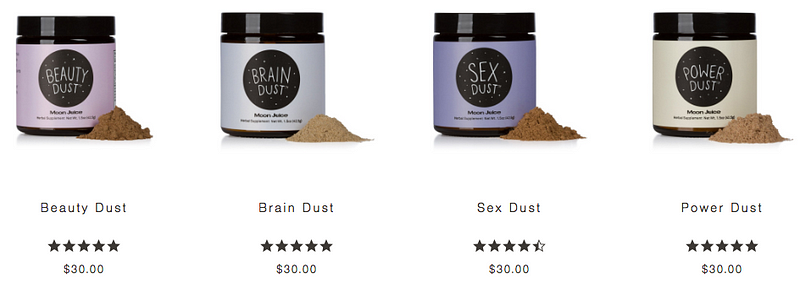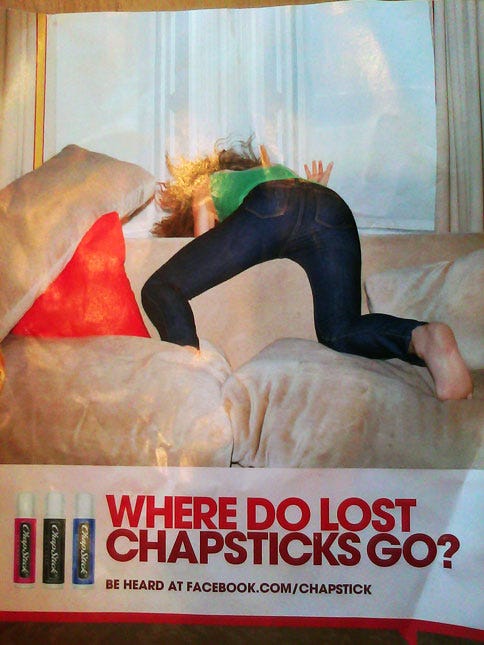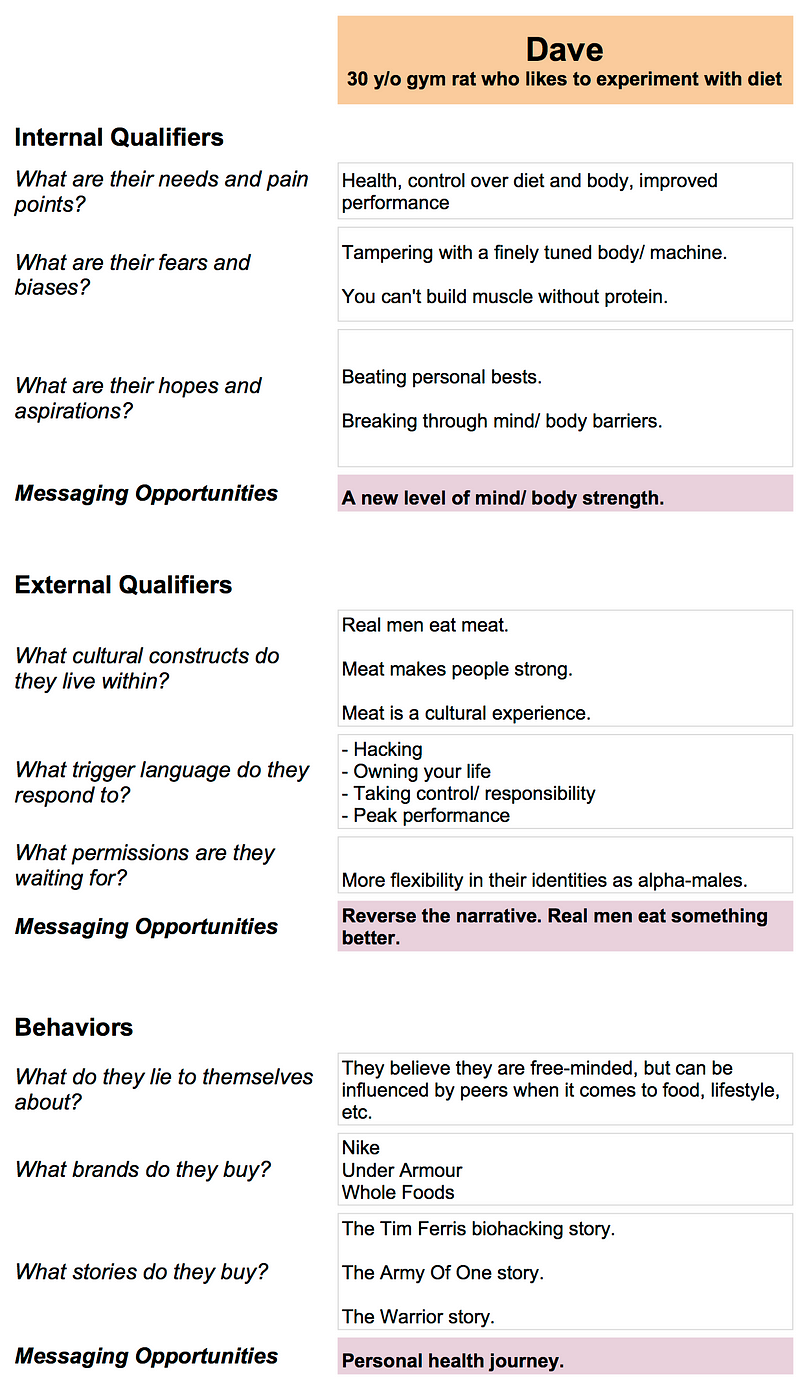The goalpost is different for brand-led companies.
Decisions are 100% emotional.
That’s not hyperbole. It’s scientific fact. Without emotions, we’d have incredible difficulty choosing even the simplest of things, such as what to shoes to wear.
Neuroscientist Antonio Damasio discovered that fact a few years ago while studying patients with lesions in the area of the brain where emotions are generated. These were people with full control of their logical faculties, but unable to feel emotions.
Fascinatingly, they were normally functioning patients with one very notable exception:
They couldn’t make decisions.
The vast majority of decisions have benefits and drawbacks on both sides. Choosing between blue shoes and red shoes may involve some logic (the blue shoes are more comfortable, the red shoes look cleaner), but when it comes down to it, there’s no one prevailing logic that will get you to the final choice of which shoes to wear.
It takes a non-logical leap to get to the final point of decision-making, and you can’t get to that decision point without emotional input.
So yes, we all use emotion when choosing things, especially as consumers. Not just little things, but big things, too.
Feeling With Dollars
My car was an expensive emotional choice. My entrepreneurial career (no matter how wtf and omg I can’t take this anymore it has been at times) is an emotional choice I make every day.
I bought $85 worth of cosmetics yesterday. They’re good brands, (logic) make me look nice (logic), are high quality (logic) and are necessary for my brand research in the luxury space (logic-ish)… but really, I felt like hot shit walking through Sephora and trying on makeup that was going to transform me into an empowered, beautiful, unstoppable woman (emotion).
You already know what made me drop the cash.
If 100% of decisions are made emotionally, why are we still using logic-driven, pain-point focused messaging frameworks to brand our companies?
The best brands, I mean the:
- Pay $85 for a brow gel and mascara brands
- Pre-order an electric car without a guaranteed delivery date brands
- Spend hours waiting in line on Lafayette Street for Tuesday’s drop kind of brands
… these brands go way beyond logic in their positioning and messaging.
There is no pain point to solve here. There is no real, hard-pressing need. There is, instead, a human intangible that all of them have capitalized on. An emotional need that’s rarely expressed.
Whether that’s to fit into a tribe, realize one’s potential or escape reality, unspoken emotions like these are far more compelling than any pain point.
- For the mid-management clients of your SaaS product, it might be to get the company recognition they feel they deserve but never receive
- For the entrepreneurial users of your productivity app, it may be to feel they have real and meaningful jobs just like their 9 to 5 corporate counterparts
- For the C-level buyers of your enterprise AI product, it may be to make their mark on the company, or even the industry at large
For all of these, there is a very strong emotional need that supersedes a logical one.
That’s not to say that customer pain points and needs shouldn’t be a part of your messaging process, but they shouldn’t be the end point, either.
Controlling The Right Things
As other great branding bloggers have pointed out before, “the goal of marketing is to control perceptions and change behavior.”
Changing behavior and controlling perceptions is especially important for brand-led companies as opposed to branded ones.
In my last post, I discussed the difference between branded and brand-led in the context of strategy, but here’s a quick rundown:
Branded companies have an identity, but consumers truly identify them by their products. When a product supersedes the brand, a company is always at the mercy of the consumer and their needs.
→ Think American Apparel and Old Navy
Brand-led companies, in contrast, play the long game and require more investment. The identity of the brand supersedes the product and allows a company to resist certain market forces.
→ Think Nike and Shinola
Brand-led companies clearly have heavy challenges when it comes to messaging and narrative.
They are in the long game of changing behavior, and changing behaviors requires certain ingredients.
For brand-led companies, anyone will tell you the story should lead the product.
But the story… the real story that most frameworks out there miss, is not very obvious.
I have a simple framework that will get you thinking in the right direction, but first we have to start with basics.
5 Truths of Brand-Led Messaging
1. Change the baseline
You can compete directly with your competitors in the landscape, or change the playing field altogether.
A good, brand-led messaging strategy begins by telling a new story that makes your direct competitors irrelevant to your core audience.
Evernote wasn’t a productivity app. It was a personal world for “Your Life’s Work”.
Yeah, it was weird when they started selling socks, but hey, it was so much more than just a way to keep notes. For a core and enthusiastic group of gig economy users, their “life’s work” couldn’t fit into a lowly to-do list app. Evernote’s messaging changed the baseline.
One of my favorite present-day examples is Moon Juice, which bills itself as “Plant-sourced alchemy to elevate body, beauty and consciousness” and has the Gwyneth Paltrow GOOP seal of approval.

As I’ve said in a previous article, Moon Juice may be riding the celebrity wellness wave, but it knows where to play.
The brand goes after highly motivated, self-care obsessed, information-junkie millennials that want a product to work where traditional medicine may have failed, while dazzling their imagination much like K-beauty does.
Products such as “Brain Dust” for mental flow, “Beauty Dust” for luster and the “Cosmic Provision Collection” of snacks for enzymatically live eating have proven extremely popular as Moon Juice continues to grow.
Whether it is real science or health-tainment is nearly irrelevant.
Moon Juice’s strategy is to literally be the magic potion in a world of medicines — with emphasis on the magic.
Founder Amanda Chantal Bacon is cutting through the extremely cluttered self-care and supplements space by changing the baseline.
And she’s winning.
From packaging and naming, to customer journey and narrative, Moon Juice is not a vitamin or mere health food. It’s a self-care tonic “alchemized to align you with the mighty cosmic flow needed for great achievement.”
No amount of logic can compete with that.
(You can read my full article, “3 Things New Luxury Brands Can Teach Established Marketers” here. Paywalled, sorry.)
2. Create contrast
Nancy Duarte has written some great books on the art of presentation and storytelling, but the biggest takeaway she left me with was the power of juxtaposing ‘what is’ with ‘what could be.
That constant up and down carries people through an emotional narrative.
She calls it the Secret Structure, and it’s compelling not only in presentation, but in brand messaging as well.
There is a harmony to the juxtaposition that resonates with all of us:
- Today vs. tomorrow
- The current me vs. the true me
- The reality I have vs. the reality I deserve
- Who people see me as now vs. who I really know I can be inside
What’s happening here, however, is more than just rhythm.
Extremes are hard to follow. By connecting the new and unfamiliar with the old and familiar, we’re managing that tension and making it palatable.
Jonah Berger calls it the Goldilocks effect.
“When it comes to new product or service adoption, the outcomes follow the same inverted U-shape curve. If something is too novel, it’s unfamiliar, weird and harder to understand.
But if it’s exactly the same as what is happening already, it’s boring and there’s no reason to change behavior. In between, though, it’s just right.”
Create just enough contrast to spur action. Brands like Under Armour, Slack and Dove have done just that.
3. Signal before changing lanes
If you’ve done your job as a brand-led organization, people will feel like they have jurisdiction over your company. They will feel like the brand itself belongs them, not as consumers, but as owners.
If you think about it, that’s both a very powerful force, and a frightening one.
As a brand, it means you can’t just call the shots. You have to make people believe they call the shots… that every decision you make for the brand is one that they would make themselves.
When Coke changed it’s formula in 1985, consumers lost their minds. Comments like, “Changing Coke is like God making the grass purple” pretty much summed up the sentiment at the time, and forced the company to bring back the original recipe as Coke Classic within 3 months.
Funny thing is, if you considered their campaign and positioning at the time, it made total sense to introduce the new Coke to the American market.
Except for one consideration.
Coke’s president and COO Donald R. Keough said it best himself.
‘’All of the time and money and skill that we poured into consumer research could not reveal the depth of feeling for the original taste of Coca-Cola.”
In other words, the company didn’t really own the brand. The consumer did.
That “depth of feeling” was a clear sense of ownership.
We saw the same thing happen when Netflix split their product tiers and sent stock prices plummeting as 800,000 subscribers left. They eventually weathered the storm, but not without a painfully drawn out comeback effort.
An even more poignant example is Chapstick’s 2011 ad.
People. Lost. Their. Shit.

If you’re a post-boomer woman like me, it might not seem like much. It’s even relatable. I own 15 chapsticks, I just don’t know where they are. And ok, it’s objectifying but I’m used to images like this.
However, when this ad went live, a blogger posted their views on how the ad was sexist and disgusting and the sentiment spread like wildfire.
Let’s remember it was 2011 and brand social media scandals were part of the news cycle, and the reaction was very poorly handled by the company, but nonetheless people were incensed.
It even inspired a Change.org petition to “Remove Ads That Objectify Women and Sexualize Lip Balm!”
… but wait a second, aren’t most heritage women’s brands built on some form of sexualization of women?
Why did Chapstick get chastised while others like Calvin Klein and Bulgari crossed the same line on a regular basis?
It’s because people like me didn’t own the brand.
In 2011, the consumers who owned Chapstick were our moms and grandmothers. They were the moral, price-sensitive American women who saw Chapstick as a utility for chapped lips and not a beauty product associated with feminine sexuality.
They’re the women who grew up watching these kinds of Chapstick ads in the 1970’s (and likely the older demographic that Chapstick was trying to move away from):
‘Where Do Lost Chapsticks Go’ was too much of a break from the current messaging and people felt betrayed.
If you’re going to change lanes, signal first. Otherwise you’re going to crash.
4. Know which ‘why’ you’re answering
I’ve talked about the ‘why’ before, and if you didn’t hear it from me, you probably heard it from someone else lauding Simon Sinek (as they should).
But what the ‘why’ actually is seems to be debatable.
I’ve seen the ‘why’ made synonymous with the ‘vision’ of a company countless times in branding articles.
But I disagree.
The why is not your vision.
It’s your reason for existing, and it answers the question, “Why should I care?”
Filmmaker Andrew Stanton drives this point home in his talk on storytelling for film and media.
It’s your job, as a brand, to make the consumer care.
- Lego’s why is because wholesome play should happen at every age
- Andreessen Horowitz’s why is because systems will change humanity
- Chipotle’s why is because eating right can heal the planet
None of these are company visions, but it’s easy to see how the vision was derived from the why.
When you can answer the question, “why should I care?” you’re going to force a reaction, and a reaction is the marker of a strong brand-led message.
5. Earn respect, don’t demand it
This truth is a product of the current climate. Markets are extremely fragmented, information is cheap and barriers to entry (both on the supply side and demand side) have crumbled.
Luxury brands, heritage brands, exotic brands and limited-access brands that once exerted authority are quickly losing power.
You can say you’re #1, best-in-class or world-renowned, but those aren’t differentiating markers anymore. There are just too many choices and too many alternatives… and in general, post-boomer consumers are too self-empowered to take a brand at face value.
Talk is cheap. Actions are the new currency.
When a brand takes bold risks to resonate clearly with their core audience, perhaps even alienating non-core users, consumers take notice.
Bold risks don’t have to be huge. They just have to be deliberate.
One of my favorite music secrets is the W Hotels app.

Everything from the homepage to the top level menu and content revolves around music. And not just any music — tons of custom mixes by amazing DJs you’ll never find anywhere else.
Why a music-centric app? Because the W experience is never about the room. It’s about the tribe.
I’ve spent countless nights at Ws across the world but I’ve only ever slept in a W room once.
I, like most people, go there for coffee meetings, dinner meetings and parties. It’s where you gather, and no matter where you are in the hotel, incredible music is pulsing through the air.
W knows that music can transport you. Music is the experience and if they can own the experience of discovering, consuming and feeling music, then they own the in-app relationship.
That’s why music is organized by common areas in the hotel, so you can move through the music the way you’d move through a party or night out with friends.
It was a bold move that de-emphasized room bookings (like most other hotel apps) and elevated a sense of discovery and belonging instead.
In fact, the only place you won’t hear music at a W is in the actual room you’re sleeping in.
A Framework For Getting Started
Good brand messaging solves multiple problems at once.
A strong story can make issues around user behavior, trust, retention and competitive forces disappear. Just look at Airbnb and their brilliant “Belong Anywhere” positioning.
It also takes the complex and makes it simple.
The framework below is designed to get you thinking in the right direction. It asks hard questions that combine user psychographics with needs and patterns.
The point is to go past the obvious and find the powerful subtext that you can incorporate into your brand.
Remember, branded messaging usually addresses the pain point, but brand-led messaging addresses the reward.
Use this framework to move from surface-level pain points to soul-level desires.
This framework is not an ending point, but rather a starting point to help you:
- Empathize with your customer and see the world through their POV
- Ask questions that get to the subconscious truth, not the conscious answer
- See the invisible matrix that controls your user’s beliefs, behaviors and perceptions

You can see there are a lot of heavy questions here, but all of them tie back to two things: messaging opportunities within a user persona, and patterns between personas.
Using this framework takes time and some digging, so let’s look at examples two ways.
Patterns
Let’s assume we’re developing messaging for a food tech startup that’s developed a vegetarian meat alternative that tastes and looks like the real thing.
Their strategy is to go after an untapped market in the millennial male, beef-eating, middle America, steak-and-potatoes audience who grew up with a strong narrative about eating meat as part of a healthy diet.
It’s counterintuitive and seems like a difficult demo to capture, but if they can get it right, there’s tremendous opportunity.
I want to be clear that this is not researched, focus-grouped or based in any hard findings. This is a shallow set of personas made up for a fictional company, but it makes a point about finding patterns between personas:

Three patterns are already apparent:
- Strong themes of personal excellence.
- All 3 personas are seeking some sort of optimization (emotionally or physically).
- All 3 have a strong sense of autonomy. Seeking a sense of control.
We know that this needs to be about the customer experience, and we know that our product must lend itself to that experience.
Thus a plausible idea would be to make our product about performance.
This is a meat alternative made to perform better than meat. It’s not a substitute, it’s an improvement. It’s also about the internal, physical and emotional performance of our users.
Better performance of the body + better performance of the soul.
Already we see the message is not about health. It’s about reaching your personal best.
That’s a very unique message that resonates with our three personas, differentiates among other heath- or planet-driven players in the market, and raises the baseline.
Messaging Opportunities
Now let’s look at messaging opportunities within the Dave persona.

We immediately see a few messaging opportunities. Keep in mind these aren’t necessarily the words you’d use in your messaging, but they are threads to follow and see if they create a compelling brand.
- Internal Qualifiers show Dave is looking to reach the next level within himself. A message around a new level of mind/ body strength, no matter how subtle, will matter to him.
- External Qualifiers are interesting. If we gave Dave a new narrative around his identity, he may find the freedom and flexibility he’s looking for in not just a product, but his lifestyle.
- Behaviors are interesting, too. We know Dave appreciates premium, upmarket offerings. He’s extremely intelligent and empowered in his personal lifestyle products and realizes you get what you pay for. Messaging around a personal health journey fits well into his life story.
The beauty of this matrix is the interconnectedness of messaging. The three concepts within Dave above harmonize with our observed pattern across Dave, Mike and John.
Best Practices
- Always be customer centric. Your ‘why’, your ‘what’ and your ‘how’ should be about them, not you.
- Separate the product from the brand. They can be closely linked in the end, but ultimately a brand-led company is not promising a product experience. It’s promising a human experience.
- Look for cultural trends and constructs all around you in daily life. For example, significant trends around self-care and wellness, personal transformation, redefined parenthood and decentralized luxury are all front and center for the millennial generation right now.
- As Shakespeare said, “Brevity is the soul of wit”. A framework will tell you all of the boxes you have to tick off, but finding a single message (or handful of messages) to meet all those requirements is difficult. This is the art of brand strategy and strategic messaging. Don’t give up. Just keep pushing yourself. When you get it, you know it.
- Fill out this framework and then leave it alone. The hidden truths you uncover will germinate in your mind and eventually find a path to the right message.
Ah, messaging. So simple, yet so convoluted.
The next time you hear a brand message that stirs your soul, pay attention to how it works. I guarantee it’s working on multiple levels, solving multiple problems, with one eloquent solution.
The stories we tell ourselves shape our life experience. As a brand, you can insert yourself as an instrumental part of that life experience, but only if you truly understand what that experience is in the first place.
Take the time to do your messaging right. Your customers deserve it.




